01). Manfred Mann's Earthband - Father of Day, Father of Night

From "Solar Fire" in 1974, the 4th album from the Earthband. South Africa-born keyboard player Manfred Mann (real name Manfred Lubowitz) left SA in 1961 and emigrated to the UK, where he met drummer Mike Hugg. They formed the Mann-Hugg Blues Menn in December 1962 together with vocalist Paul Jones, and, in 1963, he changed his name to Manfred Mann at record company EMI's suggestion. Their debut album, ''The Five Faces of Manfred Mann", was released in 1964, and they had much success with a number of charting singles such as "Ha Ha Said The Clown", "Sha La La" and many more. In 1969, Mann and Hugg then formed Manfred Mann's Chapter 3, which was a free-form jazz rock group, with guitarist Brian Hugg and bass player Steve York, together with various drummers, session singers and a horn section. Chapter 3 recorded two albums for Vertigo Records, both of which are fairly collectible.
Mann and Hugg, together with bass player Colin Pattenden, guitarist/vocalist Mick Rogers and drummer Chris Slade, then formed the Earthband in March 1972. They signed to Philips Records and they released their self-titled eponymous album that year. One further album was released on Philips ("Glorified Magnified" - 1972) before the band moved to Vertigo and released the excellent "Messin' " album in 1973 (a track from "Messin' " was released on the double Vertigo "Suck It and See" double compilation album in 1973). "Solar Fire" was next in line, the band's first for Bronze Records and their great version of Bob Dylan's classic "Father of Day, Father of Night" was one of the album's highlights. By now, Manfred Mann had developed a reputation as one of the finest Moog players in the world. The band scored with subsequent albums such as "The Good Earth'', "Nightingales and Bombers" and "The Roaring Silence", as well as with a number of singles such as "Blinded By The Light" (a cover of the Bruce Springsteen classic. In fact, The Earthband became quite well known for covering Springsteen numbers), "Davey's On The Road Again" and others. The band continued to record well into the late 80's/early 90's and Manfred Mann is still around today and recording great music. The latest Earthband album, "Manfred Mann '06", was released in 2005.
02). Gravy Train - Starbright Starlight

From "Staircase To The Day" in 1974, the band's 4th and final album. Gravy Train released two great albums for Vertigo in the early 70's ("Gravy Train" in 1970 and "Ballad Of a Peaceful Man" in 1971) before moving on to Pye Records' Dawn subsidiary label in 1973. They released "Second Birth'' that year and although the album had it's moments, it wasn't well received. The band's final album was arguably their best. "Staircase To The Day" featured original members, vocalist/guitarist Norman Barrett, bassist Les Williams, flautist/keyboard player J.D.Hughes, together with drummers Jim Frank and and Russ Cordwell, guitarist George Lynon and synth players Pete Solley and Mary Zinovieff. It's a great pity that Gravy Train folded around this stage, as they were really starting to sound great. Norman Barrett would later feature with Mandalaband before becoming involved in Christian music. (See the previous write-up on Gravy Train elsewhere on The RockIt Scientist website).
03). Argent - Thunder and Lightning
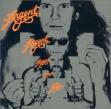
Taken from "Nexus", their 5th album, released in 1974. Argent was formed by keyboard player Rod Argent when The Zombies split up in 1969. The band featured guitarist/vocalist Russ Ballard, drummer Rob Henrit and Jim Rodford on bass. They released about 8 albums and split in 1976. This is the album that spawned their brilliant ''The Coming of Kohoutek". Other Argent albums worthwhile checking out are "Argent" (1970), "Ring Of Hands" (1971), "In Deep" (1973), and the excellent live "Encore" (1974). The band's final two albums, "Circus" and "Counterpoint", both released in 1975 and both featuring guitarists John Grimaldi and John Verity, (who'd replaced Russ Ballard in May 1974. He went on to pursue a solo career and he became a very successful songwriter and producer), have recently been released on CD. When Argent folded in 1976, Rod Argent also pursued a solo career. Rob Henrit and Jim Rodford later formed Phoenix before joining The Kinks.
04). Murphy Blend - Speed Is Coming Back
From "First Loss", released in 1971, the one and only album from this great German prog rock band who were formed in Berlin in 1970, with the members being Wolfgang Rumler on guitar and vocals, Andreas Scholz on bass, Achim Schmidt on drums and vocals and Wolf-Rudiger Uhlig on keyboards and vocals. Quite a mystery band, they took their name from a brand of pipe tobacco. The album features some stunning Hammond work by Uhlig, who later went on to feature with fellow German rockers, Hanuman. The CD version of the album, released on Kuckuck Records, is also quite rare (only 1000 copies were pressed). Andreas Scholz later went to Blackwater Park. (A track from Blackwater Park's sole album, ''Dirt Box", is featured on the first Dinosaur Days cd, released in 1999).
05). Pancake - Aeroplane
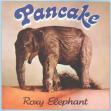
Formed in Stuttgard, Germany in the mid 70's, they were one of the lesser known of the German prog bands. They released three albums between 1975 and 1979, "Roxy Elephant", their debut, from which the featured track was taken, "Out Of The Ashes" in 1978 and "No Illusions" in 1979. All three albums had three almost completely different line-ups, with only guitarist Walter Negele the common member. The line-up on "Roxy Elephant" was Negele on guitar, Gunther Konopik on percussion and vocals, Tommy Metzger on guitar and vocals, Werner Bauer on bass and vocals and Hampy Nerlich on vocals. The other two albums ranged in style from the mellow side of bands like Novalis to the harder style of Eloy and Eela Craig. By the time the final album came out, they had a female vocalist (Biggi Zmierczak), and she added a different dimension to their sound.
06). Jade Warrior - Mwenga Sketch
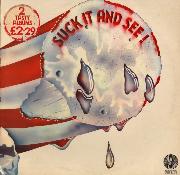
Jade Warrior were a fantastic UK prog/hard rock outfit who were formed in the late 60's by guitarist/keyboard & bass player Tony Duhig and keyboard player/flautist/percussionist John Field, who'd both been in a mid to late 60's band called July. Bass player Glyn Havard joined and Jade Warrior released their self-titled debut album in 1971. The subsequent albums, namely "Released" (also 1971) and "Last Autumn's Dream" (1972), were all released on Vertigo Records, with the latter album spawning their only single for Vertigo, "The Demon Trucker". Duhig and Field were also involved with South African band Assagai at this stage. Jade Warrior recorded enough material for a double album, but Vertigo weren't happy about the idea of a double album, so the mooted 4th album was subsequently shelved. The featured track surfaced on the Vertigo compilation "Suck It and See" in 1973 and it was finally released on ''Eclipse", many years later.("Eclipse" also featured Alan Price on drums and Dave Duhig on guitar, both of whom had featured on "Last Autumn's Dream". Price featured on "Released", as did Dave Conners on saxes and flute).
Jade Warrior then moved to Island Records, and it was around this time (1973) that Glyn Havard left the band. Duhig and Field continued with Jade Warrior and they released a number of albums for Island, namely "Floating World"(1974), "Waves" (1975), "Kites" (1976) and "Way Of The Sun" (1977). The four Island albums were later released on a double CD compilation called "Elements: The Island Anthology", in 1995. What would have been their fifth album for Vertigo, "Fifth Element", was also released quite a few years later, in 1998. The line-up on "Fifth Element" was the same as that on "Eclipse". Subsequent Jade Warrior albums included "Horizon" (1984), "At Peace" (1989), "Breathing The Storm" (1992), and "Distant Echoes" (1993). On the later albums, Gowan Turnbull featured on saxes and flute, Brad Lang and Dave Sturt on bass, Jeff Barak on drums and Colin Henson on guitars.Tony Duhig died of a heart attack in January 1991. Glyn Harvard resurfaced in the Yachts, Jane Aire and The Belvederes and The Dogstar Poets.
07). Nektar - 1-2-3-4
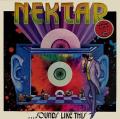
From "...Sounds Like This" in 1973, their third album, an album recorded live in the studio. Essentially a UK band, Nektar based themselves in Germany where they were very popular. Featuring guitarist Roye Albrighton, keyboard player Alan Freeman, bass player Derek Moore and drummer Ron Howden. The group split in the early 80's and reformed about 5 years ago. They released a new DVD and album "Evolution" in 2005. The featured album has been re-released in a remastered format, as has been the case with much of the band's earlier material. See other write-up on this great band on The RockIt Scientist website.
08). Rush - La Villa Strangiato
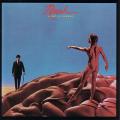
From "Hemispheres'' in 1978, one of the finest instrumental guitar tracks ever, featuring Alex Lifeson on guitars, Neil Peart on drums and Geddy Lee on bass. Formed in Toronto, Canada, in the early 70's, initially with John Rutsey on drums, they released their self titled debut album in 1973 on the Moon Record label. Rutsey was replaced by Peart in 1974, and Rush's line-up has remained stable and consistent since then. They then moved to Mercury Records and recorded some truly amazing music for the label. Albums are too numerous to mention here, but ones to look out for are "Caress Of Steel" (1975), "2112" (1976), ''A Farewell To Kings" (1977), the featured album (especially!), and "Moving Pictures" (1981). In fact, Rush very seldom DIDN'T deliver the goods, in the studio or on stage. They've since become one of the most respected bands in the world. The Canadian Government recognized the band as one of the country's national treasures and awarded them the title of Canada's Ambassador's To Music in the late 70's. In spite of real tragedy, (Peart lost both his daughter to a vehicle accident and his wife to a health condition within a year), Rush is still around in a big way. Their new live DVD, "R30", is one of the dvds of the year. Their latest studio album "Vapor Trails", was released a few years ago, although they released a covers album called "Feedback" since then. Rush are one of the main reasons why rock music has survived and thrived, and always will!
09). Mindstorm - Witch Doctor
A powerful Canadian hard rock outfit formed and led by vocalist Travis Mitchell, together with guitarist Al Rodgers. The track was taken from the self-titled debut album, released in 1987. The album features musicians that either are with, or have links with, fellow Canadian rockers April Wine, namely Gerry Mercer (drums) and Gary and Bruce Moffet. Other musicians include Russ Boswell and Pat Donaldson on bass, Ian Auger and Mark Chichkin on guitars and keyboards. Mindstorm have released three albums, "Back To Reality", the second album, in 1991, and "Mindstorm 3", in 1996. Their version of April Wine's "Weeping Widow", on the third album, is awesome!
10). Budgie - Breaking All The House Rules

From ''Radio Sessions 1974 - 1978", recorded in the US during a tour to promote their "Impeckable" album. Featuring bassist/vocalist Burke Shelley, guitarist Tony Bourge, drummer Steve Williams and second guitarist Myf Issac. Williams had replaced Pete Boot, who, in turn, had replaced original drummer Ray Phillips, in 1974. (Phillips later appeared in Tredegar, Titus Oates and Freez, and he later revived Six Ton Budgie, Budgie's original name, with his son, Justin, on guitar). Budgie spent a number of years in the US and Canada, where they'd built up quite an extensive fan base, during the later part of the 70's. Tony Bourge later left the band and he was replaced by John Thomas, ex-George Hatcher Band. (Bourge, like Phillips, also appeared with Tredegar,Titus Oates and Freez). Budgie then moved back to the UK in 1980 and they released a number of good albums ("Power Supply", in 1980, and "Night Flight" in 1981), that revived the interest in the band previously held by the audiences there. A final album, "Deliver Us From Evil", which featured Duncan Mackay on keyboards, surfaced in 1982, but the band folded in the early 80's. The band reformed a few years ago and they're sounding great - check out their "Life In San Antonio" album!
11). Fontessa - Victim Of The Past
From "Fontessa", in 1973, the debut album from this very competent Dutch sextet who released two great albums between 1973 and 1976. Similar in style to early Wishbone Ash., the band was formed by guitarist Frank Van Der Kloot, previously with Drama (he also appeared on Barry Hay, Golden Earring's vocalist/flautist's, solo album). The other members were Shel Schellekens on drums, Jan Visser on bass, Ritchie Hamilton on vocals, Eric Tagg on Fender piano and Peter Vink on bass. The band folded after releasing their second album, "Fontessa 2", in 1976. Frank Van Der Kloot also released a solo album in 1976.
12). Agitation Free - Laila Part 2
Formed in Berlin in the late 60's, Agitation Free were one of the more important German bands, with some of the members having roots with Tangerine Dream, Ash Ra Tempel and Guru Guru. It took the band quite a while before they recorded their debut album. ''Malesch" was released on the Vertigo label in 1972. Featuring Jorg Schwenke on guitar, Lutz Ulbrich on guitar and organ, Michael Gunther on bass, Burghard Rausch on percussion and Michael Hoenig on synth, effects and steel guitar, the album documented their trip to North Africa and The Middle East. It was quite a revolutionary album in that it blended location recordings together with their own unique avant-garde compositions. The follow-up album, "Second", from which the featured album was taken, was released in 1973. Stefan Diez had now joined on guitar, and the band had now adopted a more progressive style, although still retaining their avant-garde roots. Strangely and sadly, the band only really gained recognition in France. Largely ignored in Germany and totally ignored in the UK, they released two further albums ("Last" and "Fragments", both in 1974, although "Last" was only issued in France and "Fragments" only emerged in 1996) before splitting in the mid 70's. They reformed in the 90's and a few other albums such as "At The Cliffs Of The River Rhine" and "River of Return" have since been released, as has an album of previously unreleased material called "The Other Sides of Agitation Free". Their first three albums are highly recommended.
13). PFM (Premiata Forneria Marconi) - Meridiane
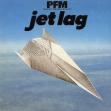
From "Jet Lag" in 1977. One of Italy's oldest and most successful bands. They were formed in 1970, evolving out of two bands, I Quelli and Dalton. The initial line-up included Mauro Pagani on flute and violin, Giorgio Piazza on bass, Flavio Premoli on keyboards and vocals, Franco Mussida on guitars and vocals and Franz di Cioccio on drums. They released their debut album, "Storia Di Un Minuto" in 1972, and it was immediately apparent that they were influenced by bands such as King Crimson, Gentle Giant and Jethro Tull. This influence continued on their second album, "Per Un Amico", also released in 1972. The album reached number one on the Italian charts, and this caused a bit of a stir in the UK, where they were signed to Emerson, Lake & Palmer's Manticore label. The resulting album, ''Photos of Ghosts", released in 1973, spawned one of their best known tracks, ''E Festa" ("Celebration"). With English lyrics courtesy of King Crimson's Pete Sinfield, the album sold well in both the UK and the US. Subsequent albums such as "L'Isola Di Niente"("The World Became The World", in 1974), "Live in The USA", (also in 1974, recorded during their first US tour), "Chocolate Kings" in 1975, and the featured album, all did fairly well for PFM, who had now secured the services of ex-Acqua Fragile vocalist Bernardo Lanzetti. The Japanese market also started to take note of this great Italian band and they became very popular there too. The band continued to record well into the 80's and are still around today, making them one of the oldest prog groups in the world, although later albums, whilst being musically competent, paled in comparison to their earlier work.
14). Phenomena - Believe
From "Phenomena" in 1985, their first album. Phenomena was an ambitious conceptual project put together by guitarist Mel Galley, previously with Trapeze and Whitesnake, together with his producer brother, Tom. The album features contributions from drummers Cozy Powell and Ted McKenna, bass player Neil Murray, guitarist John Thomas (Budgie), keyboard players Don Airey, Richard Bailey (Magnum) and Robin Smith, and vocals from Glenn Hughes. The second album, "Phenomena 2 - The Dream Runner", released in 1987, featured vocalists John Wetton, Ray Gillen (Badlands/Black Sabbath) and Glenn Hughes, together with guitarist Scott Gorham (Thin Lizzy) and others. The third and final album, "Phenomena 3 - Innervision", released in 1992, was arguably their best, but the band unfortunately folded in the early 90's.
15). Magnum - How Far Jerusalem

From "On a Storyteller's Night". One of the classic albums to emerge from the UK during the mid 80's. Originally released in 1985, the album, which has recently been re-released in a remastered format, was a major breakthrough for this fantastic British band, who were formed in Birmingham in 1972 by guitarist and principal songwriter Tony Clarkin, together with vocalist Bob Catley, drummer Kex Gorin and bass player Dave Morgan. Initially acting as Del Shannon's backing band, they signed to Jet Records in 1978 and they released their debut album,"Kingdom Of Madness", that year. At this stage, Wally Lowe replaced Morgan and Richard Bailey had come in on keyboards. The band showed much potential and toured relentlessly, supporting acts such as Def Leppard, Judas Priest and others, but success eluded them. They released a further two albums ("Magnum 2" in 1979 and ''Marauder" in 1980), but these albums also failed to set the charts alight.
In 1982, now with keyboard player Mark Stanway in the place of Richard Bailey, Magnum released one of their strongest albums to date, "Chase The Dragon". The album was their first to enter the UK charts, and a number of tracks from the album still appear in their live set. The follow-up album, "Eleventh Hour", was equally as good, although at this stage Clarkin fell ill and the band had a falling out with Jet Records. Magnum then signed to FM Revolver Records and they released the featured album. "On a Storyteller's Night", with it's fantastic songs and superb musicianship, heralded a new dawn for a band that had been plying their trade for well over 13 years before people sat up and took note of their class and quality. A very successful UK tour followed and the band then signed to their first major record company, Polydor Records. Subsequent albums such as "Vigilante"(1986), "On The Wings Of Heaven"(1988), "Goodnight L.A"(1990) and the great live "The Spirit"(1991), were all very good releases from the band, who now featured new drummer Micky Barker, who joined in 1986. The band released a few more albums before Catley and Clarkin formed Hard Rain in 1997, recording two albums, ''Hard Rain" that year, and ''When The Good Times Come" in 1999. Catley also embarked on a solo career and released five albums before the two put Magnum back together again in early 2001. They've since released a number of very good albums, the latest being "Brand New Morning", and a new double dvd, "Livin' The Dream", which was issued in 2005.
Magnum are a perfect example of a band that survived and succeeded, purely by virtue of the fact that they worked hard for many years and never gave up. Success was bound to come, and when it did, it was richly deserved. "On a Storyteller's Night" is a classic album in every sense of the word, and "How Far Jerusalem" is definitely one of THE greatest tracks to emerge from any band in the UK for many years.
16). Black Sabbath - The Shining

Taken from "The Eternal Idol" in 1987, the first album to feature Tony "The Cat" Martin, who replaced Glenn Hughes. Black Sabbath are undoubtedly one of the most influential hard rock bands of all time. Formed in Birmingham in the UK in the late sixties, they evolved out of two bands, namely Polka Tulk and Earth. Ozzy Osbourne (vocals), Tony Iommi (guitar), Terry "Geezer" Butler (bass) and Bill Ward (drums) took the name Black Sabbath from a Boris Karloff movie. They signed to Vertigo Records and released their self-titled debut album in 1970. The above line-up remained constant for eight years, and they released eight albums, all of which had their moments. The first five albums from the Sab's early years are highly recommended, with the standout albums being "Master Of Reality", "Volume 4" and "Sabbath Bloody Sabbath" (which featured Yes keyboard player, Rick Wakeman). Internal squabbles were unfortunately starting to cause havoc within the band.
This led to Ozzy being fired in 1979 - he went on to embark on a very successful solo career. He was replaced by Ronnie James Dio of Elf and Rainbow fame. The resulting album, "Heaven and Hell", released in 1980, is generally felt by many fans to be one of the band's best ever albums. (The title track was one of the featured tracks on the second Dinosaur Days compilation CD, released in 2000). Dio's stay with the band lasted for two further albums, "Mob Rules" (1981) and "Live Evil" (1983), with Vinnie Appice on drums. Dio, who is one of the greatest rock singers and frontmen of all time, then left to form his own band, Dio, in 1983 (His "Holy Diver" album, originally released in 1984, has recently been re-released). Ian Gillan, of Deep Purple fame, then formed an unlikely liaison with Sabbath, appearing on "Born Again", in 1983. Whilst the album was received with mixed feelings, it had some great songs, and Gillan was sounding great with the band, although some felt that his blues/rock voice didn't quite fit in with what Sabbath were doing. Bill Ward had left the band and he was temporarily replaced by old friend Bev Bevan from ELO, although Ward appeared on "Born Again". The band then went through further changes, with both Ward and Butler leaving (he later formed GZR). Ward subsequently released two solo albums, "Ward One: Along The Way" (1990), and "When The Bough Breaks"(1997). Three years passed before a new Sabbath album appeared. Tony Iommi had retained the Sabbath name and he released ''Seventh Star" (released as "Black Sabbath featuring Tony Iommi"), in 1986. Glenn Hughes was on vocals, Dave "The Beast" Spitz was on bass and Eric Singer on drums, together with longtime Sabs keyboard player, Geoff Nichols (ex-Quartz). Hughes left after a few gigs and he was replaced by Badlands and Sun Red Sun vocalist Ray Gillen, although Gillen never appeared on any Sabbath album. Further changes ensued in 1987, with the release of the featured album.
"The Eternal Idol", as stated earlier, was the first album to feature Tony Martin. It has to be said at this stage that, whilst not taking anything away from Ozzy as a dynamic and controversial (and Sabbath's most popular) frontman, his shortcomings in the vocal department were very apparent when the likes of Tony Martin and Ronnie James Dio are heard on the later era Sabbath albums. Sabbath may have lost a bit of their popularity when Ozzy left, but take nothing away from Tony Iommi, (who Ozzy once described as "the master of the heavy metal riff"), who kept the name of this fantastically important band alive, utilizing the services of some amazing musicians, such as Neil Murray (bass) and Cozy Powell (drums). Albums such as "Tyr", "Headless Cross" and "Cross Purposes", all featuring Tony Martin, are amongst the best albums Black Sabbath ever released. Dio returned in 1992 and appeared on ''Dehumanizer", as did drummer Vinnie Appice. Martin, who at times was replaced by Rob Halford of Judas Priest, rejoined the band and appeared on "Forbidden" in 1995. The Sabs story almost came to an end at this stage. Then, to the delight of legions of Sabbath fans the world over, the original band kissed and made up and, in 1998, released the double "Reunion" live album. (A dvd called "The Last Supper", which documents the awesome gigs at Birmingham's NEC, was also released). Tony Iommi, in the meantime, released his first solo album, ''Iommi", in 2000, and he recently collaborated with Glenn Hughes on "Fused" in 2005. An album called "The 1996 Dep Sessions", also recorded with Glenn Hughes, was released in 2004 (this album was originally "unofficially" released as "Tony Iommi - Eighth Star, featuring Glenn Hughes", in 2000).
Black Sabbath are still around today, as is Ozzy Osbourne, who has recently released a new covers album.
17). Thin Lizzy - Jailbreak
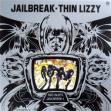
From "Jailbreak" in 1976. Formed in the late 60's in Dublin, Eire by bassist/vocalist Phil Lynott, guitarist Eric Bell and drummer Brian Downey. They signed to Decca and released two albums, ''Thin Lizzy", in 1971 and "Shades Of a Blue Orphanage" in 1972, neither of which charted, although their first single, "Whiskey In The Jar", reached number six on the UK charts. A third album, "Vagabonds Of The Western World", was released in 1973 before Eric Bell left in 1974. He was replaced by Gary Moore, who only stayed with the band for a few months before being replaced by two guitarists, Brian Robertson and Scott Gorham. (Two other guitarists, Andy Gee and John Du Cann, later of Atomic Rooster and Hard Stuff fame, were also in the band for a short while). The line-up of Lynott, Downey, Robertson and Gorham signed to Vertigo Records and recorded their first album, ''Night Life", in 1974, with "Fighting" following in 1975. Their breakthrough year came in 1976, with the release of the featured album, which hit the charts in a big way. By the time the album was released, the band was at their peak, one of the most popular live bands in the UK. A hand injury forced Brian Robertson to leave the band temporarily.
Gary Moore then returned to the fold for a while. When Robertson recovered, he returned to Thin Lizzy and they released "Johnny The Fox" in 1976 and ''Bad Reputation" in 1977, with the brilliant "Live and Dangerous" coming out in 1978. Moore rejoined the band on a permanent basis in 1979 (Robertson had left to form Wild Horses) and he appeared on "Black Rose" that year. Midge Ure, formerly of Slik and The Rich Kids and later of Ultravox fame, replaced Moore. Ure, in turn, was replaced by Snowy White, who appeared on "Chinatown" in 1980 and "Renegade" in 1981. By the time 1983's "Thunder and Lightning" album had come about, Snowy White had been replaced by John Sykes, formerly of Tygers of Pan Tang. Lynott then split Lizzy in 1984 and formed Grand Slam. He sadly passed away on April 4th, 1986, the victim of substance abuse. A posthumously released live album, "Life-Live", featuring all the Lizzy guitarists, was released in the mid 80's. In 2000, Scott Gorham and John Sykes revived Thin Lizzy, with Tommy Aldridge on drums (ex-Black Oak Arkansas and Ozzy Osbourne), Darren Wharton on keyboards and Marco Mendoza on bass. This line-up released the live "One Night Only" album in 2000.
18). Led Zeppelin - Heartbreaker
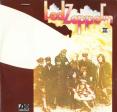
From "Led Zeppelin 2" in 1969. - one of their best albums. When The New Yardbirds split in mid 1968, guitarists Jimmy Page and Chris Dreja decided to form a new group. Dreja then changed his mind and instead elected to follow a career in photography, leaving Page to form a completely new band. Vocalist Terry Reid was approached, as was B.J. Wilson, of Procol Harum, but both turned the opportunity down. Reid suggested that Page approach Robert Plant, and he also suggested that Page use session drummer John Bonham. Page then approached session player and bassist John Paul Jones. This version of The New Yardbirds played a couple of gigs in Scandinavia and, on their return to the UK in October 1968, changed their name to Led Zeppelin at the suggestion of The Who's drummer Keith Moon, who's famous statement "You'll go down like a lead zeppelin!" is now legendary!
Managed by Peter Grant, the band decided to concentrate on the lucrative US market. It was also controversially decided that no singles would be released in the UK, which obviously led to a lack of radio airplay when the band first started out. They signed to Atlantic Records and released their eponymous album in the US in February 1969. It reached number 10 on the US charts and number six in the UK, and tracks such as "Dazed and Confused" and "Communication Breakdown" were to become concert favorites. When the featured album was released later in 1969, Led Zeppelin had already established themselves as a major force in world rock music. The album was on the US charts for 138 weeks, and "Whole Lotta Love", one of their best known "anthems", reached number four on the charts. Subsequent releases such as "Led Zeppelin 3" (1970), "Led Zeppelin IV" (1971) and "House Of The Holy" (1973) all fared very well on both sides of the Atlantic, and, in July 1973, a concert at New York's famed Madison Square Gardens was filmed for inclusion in the movie "The Song Remains The Same". (A double soundtrack album of the same name was released in 1976).
"Houses Of The Holy" would prove to be their last album for Atlantic. They formed their own record company, Swan Song, in early 1974. (Swan Song would later have important and successful acts such as Bad Company signed to the label). The awesome double "Physical Graffiti" (1975) was the first Zeppelin album to be released on their new label. It topped the charts in both the UK and in the US and the band's reputation as the biggest and most successful rock band in the world was endorsed by sellout concerts wherever they performed. (In April 1975, 51,000 tickets for three concerts at London's Earl Court were sold out in two hours!).
The next album, ''Presence",(1976), was a bit of a disappointment, as was "In Through The Out Door", which proved to be their last album, (released in 1979). John "Bonzo" Bonham died on September 1980 as a result of alcohol and drug abuse (he choked to death in his sleep after a heavy drinking bout). Out of respect to their friend and drummer, the remaining members decided to disband Led Zeppelin. "Coda", a posthumously released album, surfaced in 1982. Since then, a number of Zeppelin compilations have been released, the best of which was the four CD "Best of" box set, which came out in 1990. Other best of/live CDs to look out for include the double "Boxed Set" (1993), "BBC Sessions" (1997) and the triple "How The West Was Won", which came out in 2003. A number of sub standard bootlegs have also flooded the market in the past, but the sound quality of these dodgy recordings do absolutely no justice to the memory of this awesome band and are best left alone. The might and power of Led Zeppelin was brilliantly captured on the double "Led Zeppelin" dvd that was issued a few years ago.
Robert Plant embarked on a solo career in 1982 and has released a number of excellent albums to date (the latest being "Mighty Rearranger", which must rate as one of his best ever!). He's also collaborated with David Coverdale (Deep Purple & Whitesnake),Jimmy Page and others. Jimmy Page has released some solo material as well and he's worked with the likes of The Black Crowes and others. John Paul Jones has also released a few solo albums.
The book "Led Zeppelin Talking - In Their Own Words" (2004), is essential reading for anyone into this legendary band.
19). Hustler - Money Maker
From "Play Loud" in 1975, their second and last album. Formed in the UK, this boogie rock band, who were similar in style to Status Quo and Stray, were comprised of Micky Llewelyn on guitar and vocals, Tony Beard (later to work with Daryl Hall & John Oates, Peter Banks and others), on drums, Kenny Daughters on keyboards, Kenny "Tigger" Lyons (later to join .38 Special) on bass and vocals and Steve Haynes on vocals. They signed to A & M Records and released their debut album, ''High Street" in 1974. Tony Beard left the band after the first album and was later replaced by famous session player Henry Spinetti, who appeared on the featured album. "Money Maker" was released as a 45 in the UK. Both albums, which are highly recommended, have now been released on CD.
20). Toe Fat - There'll Be Changes
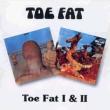
Taken from "Toe Fat 2" in 1971, their final album, produced by famous UK deejay, John Peel. Formed in June 1969 in the UK by ex-Rebel Rouser, vocalist Cliff Bennett and guitarist/keyboard player/vocalist Ken Hensley (previously of The Gods), together with another two members of The Gods, drummer Lee Kerslake and bass player John Konas. This line-up secured a record deal with the US Rare Earth Record label, a subsidiary of Tamla Motown (also known for releasing albums by Howl The Good, Xit and others), and they released their eponymous album in 1970. Released in the UK on the collectible Parlophone Record label, their debut album featured some great guitar work from Ken Hensley who, would later work with Head Machine before becoming a founding member of Uriah Heep. After two unsuccessful tours, both Hensley and Kerslake left Toe Fat (the latter to join National Head Band) before joining Hensley in Uriah Heep in 1972. Two other members of The Gods, brothers Brian and John Glasscock, on drums and bass/vocals respectively, then joined the band, with Alan Kendall, ex-Glass Menagerie, coming in on guitar. (He later joined the Bee Gees). After another US tour, this one slightly better financially than their previous two, Rare Earth Records pulled the plug and the band folded.
Both Toe Fat albums are quite rare and collectible.
Cliff Bennett went on to form Rebellion and joined Mick Green in Shanghai and was later involved in revival shows with the Rebel Rousers. John Glasscock was later involved with Chicken Shack and Jethro Tull (he died on November 17th, 1979 following open heart surgery). Lee Kerslake left Uriah Heep in the late 70's and joined Ozzy Osbourne, appearing on "Blizzard of Oz" (1980) and "Diary Of a Madman" (1981) before rejoining Uriah Heep. (He is also a member of the sensational Living Loud).
One of the greatest songwriters and musicians in rock, Ken Hensley recorded a number of excellent solo albums whilst he was still with Uriah Heep and he's recorded quite a few others since then. When he left Heep,(in the early 80's), he became involved with Blackfoot and he also worked the likes of WASP and others. He has been living in Spain and is currently involved in management and production. He appeared with Uriah Heep in December 2001 on their now quite famous Magician's Birthday Party bash. (This fantastic concert was captured on DVD and released on Classic Rock Productions in 2002).
Ken Hensley is also currently involved in guiding the career of promising South African band, MANTIS.
21). Nucleus - Song for The Bearded Lady

From the BBC live recording, "The Pretty Redhead", recorded in 1971 and released in 2003. This famous UK jazz rock outfit was put together in the late 60's by acclaimed Scottish trumpet player and composer Ian Carr, previously of The EmCee Five and The (Don) Rendell-Carr Quartet. He was joined by ex-Alexis Korner drummer John Marshall, sax and keyboard player Karl Jenkins, bass player Jeff Clyne, sax player/flautist Brian Smith and guitarist Chris Spedding, ex-Battered Ornaments (who has recently released a new solo album, "Click Clack"). The band first attracted attention when they walked off with the first prize for their innovative style of crossover jazz and rock at the 1970 Montreux International Festival. They signed to Vertigo Records and released their debut album, ''Elastic Rock" in 1970. The album was quite successful and well received, reaching number 46 in the album charts in the UK. The next album, "We'll Talk About It Later", on which the studio version of the featured album first appeared, was also released in 1970. The same sextet were augmented by Kenny Wheeler and Harry Beckett (trumpet & flugelhorn), Tony Roberts (tenor sax & bass clarinet), Ron Matthewson (bass), Chris Karan (percussion) and Keith Winter (VCS3 synth) on the follow-up album, "Solar Plexus", which was released in 1971.
Ian Carr then released his debut solo album, "Belladonna", also on Vertigo Records, in 1972. This innovative jazz/rock album featured contributions from Allan Holdsworth (guitar), Roy Babbington (bass), Trevor Tomlins (percussion), Gordon Beck (keyboards), Dave MacRae (keyboards), Clive Thacker (drums), and Brian Smith, his sax/flautist connection from Nucleus.
By the time the next Nucleus album, "Labyrinth" (1973), had been released, Nucleus were now a very respected fixture on the UK jazz/rock scene. Chris Spedding had departed (he formed The Sharks with Free's Andy Fraser - see the write-up on this band elsewhere on The RockIt Scientist website. He was initially replaced by Rock Workshop's Ray Russell), as did both John Marshall and Karl Jenkins, who went to Soft Machine. Interestingly, the featured track was originally written by Karl Jenkins and titled "Song For The Bearded Lady". Soft Machine performed the same track, now titled "Hazard Profile", on their "Softs" album in 1975. This version, featuring Allan Holdsworth at his best, was featured on The RockIt Scientist on 23 November 2005.
The inspiration for the conceptual "Labyrinth" was the mythical Minotaur. Personnel on the album now included Tony Coe (bass clarinet and tenor sax), Norma Winstone on vocals, Tony Levin (drums), Paddy Kingsland (VCS3 synth), Dave MacRae (Fender piano), Ian Carr and Kenny Wheeler (trumpet & flugel horn), Roy Babbington (bass), Clive Thacker (drums) and Gordon Beck (Hohner electric piano). "Labyrinth" was quite an ambitious project, and it saw Nucleus moving slightly away from their tried and tested jazz/rock formula. In hindsight, Ian Carr felt that he was not 100% happy with the album, but that it was a pivotal recording in his career, in that the band moved into uncharted territory. "Roots", which delved back into each band member's childhood, was also released in 1973. Personnel included Joy Yates on vocals (Dave MacRae's wife), Jocelyn Pitchen on guitar and Aurelio de Souza on percussion. "Roots" was also the first album to feature ex-Johnny Almond and Brian Auger bass player, Roger Sutton. Joy Yates, Dave MacRae and Brian Smith later relocated to New Zealand and formed the excellent Pacific Eardrum.
Ian Carr's Nucleus had, over the years, also developed the reputation as being an ''academy" for up and coming young jazz talents, and Ian Carr certainly had an ear for talent. Subsequent Nucleus albums such as "Under The Sun", "Snakehips Etcetera" and " Alley Cat" were released between 1974 and 1975, with new musicians Bob Bertles (sax), Ken Shaw (guitar), Bryan Spring (drums), Geoff Castle (keyboards) and Kieran White (from Steamhammer, on vocals, on "Under The Sun"), together with Carr and Sutton. Ian Carr was also a member of Germany's acclaimed United Jazz & Rock Ensemble, which was led by Wolfgang Dauner.
The band, down to a quintet which featured Carr, Smith, Castle and Sellers, then moved to EMI's Capitol Records and released two great albums for the label, "In Flagrante Delicto" in 1977 and "Out Of The Long Dark" in 1979, both with Bill Kristian on bass. "Awakening", on the Mood Record label, was released in 1980, as was "Live at The Theaterhaus", in 1985. Musicians at this stage included Marc Wood on guitar, Phil Todd (from The National Youth Orchestra) on sax, Dil Katz (from Barbara Thompson's Paraphernalia) on bass, and John Marshall, who had returned to the band, after having worked with the likes of Larry Coryell, John McLaughlin, Dave Holland and others.
Personnel on "The Pretty Redhead" included Tim Whitehead on saxes, Marc Wood on guitar, Joe Hubbard on bass and John Marshall on drums.
Ian Carr is one of Britain's most accomplished and respected jazz musicians, and is one of the world's great trumpet players. Apart from being Nucleus's founder and leader, he's had a career as a writer, broadcaster and teacher, all furthering the cause of jazz. In 1982, he became an associate professor at The Guildhall School of Music in London, and he later received the Calabria award for 'outstanding contribution in the field of jazz'. He wrote an acclaimed biography on Miles Davis, as well as one on Keith Jarrett, in addition to a number of other publications. Other solo albums by Ian Carr worth checking out are ''Old Heartland" and "Sounds and Sweet Airs".